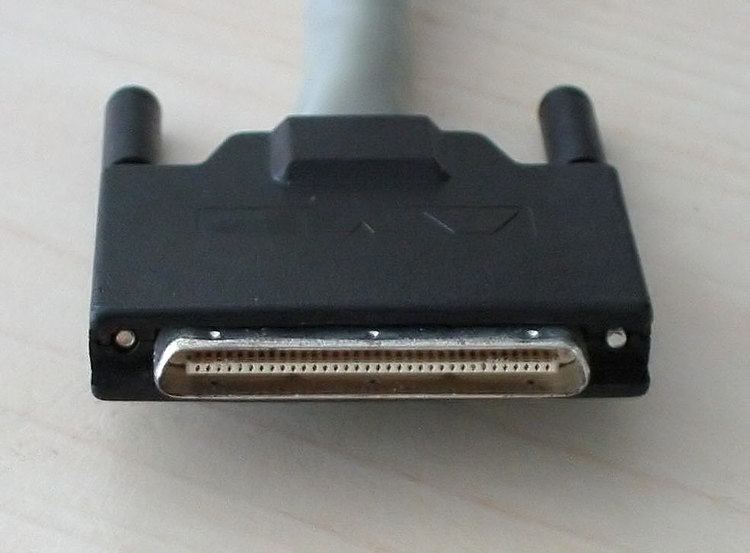 | ||
A very-high-density cable interconnect (VHDCI) is a 68-pin connector that was introduced in the SPI-3 document of SCSI-3. The VHDCI connector is a very small connector that allows placement of four wide SCSI connectors on the back of a single PCI card slot. Physically, it looks like a miniature Centronics type connector. It uses the regular 68-contact pin assignment. The male connector (plug) is used on the cable and the female connector ("receptacle") on the device.
Other uses
Apart from the standardized use with the SCSI interface, several vendors have also used VHDCI connectors for other types of computer interfaces:
References
Very-high-density cable interconnect Wikipedia(Text) CC BY-SA
